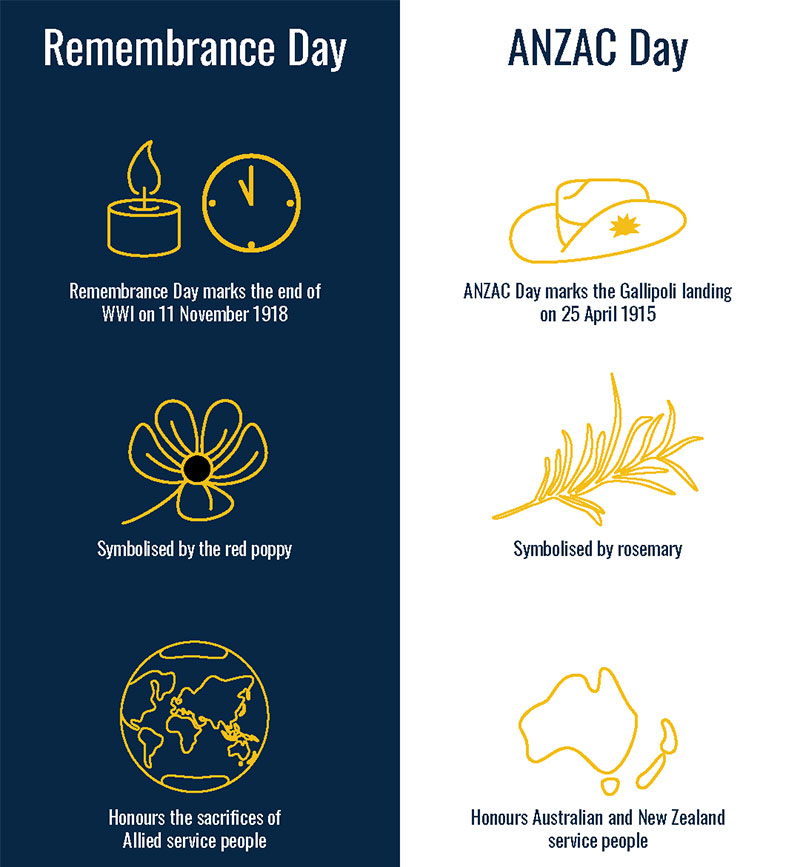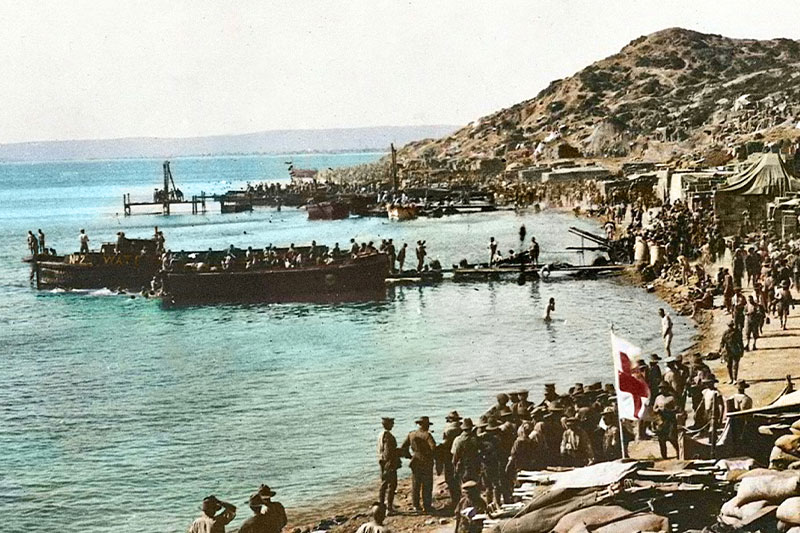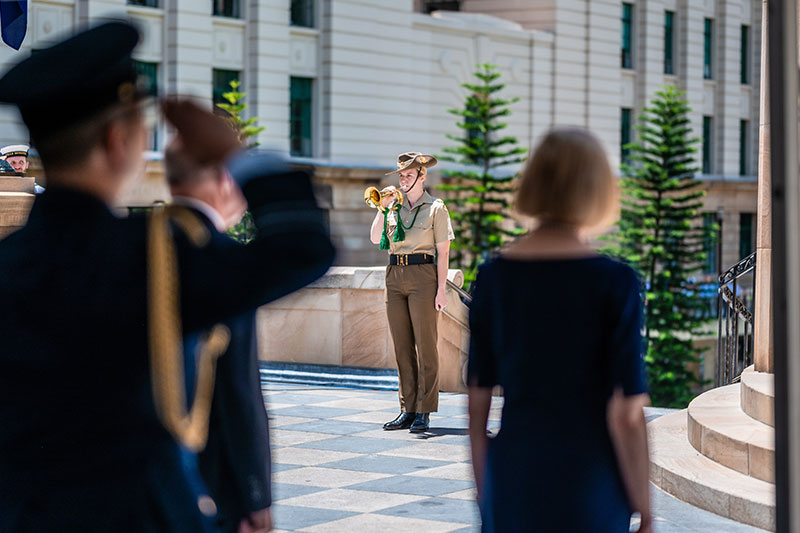
Remembrance Day vs ANZAC Day explained
14 October 2025- History & commemoration
- Ideas & info
What is the difference between ANZAC Day and Remembrance Day? This simple guide explains it for you.
Australia has two major commemorative days for those who have served our country: ANZAC Day and Remembrance Day. While they share many similarities, they have a few key differences outlined below.

1. The dates
ANZAC Day is observed as a public holiday and National Day of Remembrance each year on 25 April – the date Australia and New Zealand began their first major battle in World War I.
Remembrance Day is observed as an International Day of Commemoration on 11 November, with 11am being the most important time to pause and reflect. The 11th hour of the 11th day of the 11th month is historically significant as the time that fighting in WWI officially ended.
2. The history
Some people may confuse ANZAC Day and Remembrance Day because both days trace back to WWI.
ANZAC Day is held on the anniversary of the Australian and New Zealand Army Corps’ landing at Gallipoli, Turkey (now Türkiye) on 25 April 1915. The story of ANZAC Day is one of courage and endurance in the face of trauma and tragedy. What was anticipated to be a quick mission to remove Turkey from WWI turned into a battle that caused thousands of casualties on both sides over eight months.
Though the Gallipoli campaign failed to achieve its military objectives, it profoundly impacted Australia and its reputation as a nation. In 1916, the first ANZAC Day was observed in remembrance of all the troops who served in the fateful Gallipoli campaign. The 1920s cemented ANZAC Day as a national commemoration, which has since grown to a day of solemn reflection and gratitude to all who have served in Australia’s military.
Remembrance Day is held on the anniversary of the Armistice that ended fighting with Germany in WWI. At around 5am on 11 November 1918, the Armistice was signed by representatives of France, Britain and Germany, and six hours later at 11am, the guns fell silent on the Western Front. Remembrance commemorations began a year later in 1919, on what was originally known as Armistice Day. Its name changed to Remembrance Day after WWII.

Image: Australian War Memorial |ANZAC Beach, Gallipoli on 25 April 1915
3. The nations
ANZAC Day is the National Day of Commemoration observed in Australia and New Zealand. However, with large expatriate populations and commemorative sites located across the world, ANZAC Day services are often held overseas as well. For example, the Australian Department of Veterans’ Affairs manages ANZAC Day services in Türkiye, France, Thailand, Malaysia, and Papua New Guinea.
Remembrance Day is commemorated primarily in Commonwealth countries that formed the Allied forces during WWI, such as Australia, New Zealand, the United Kingdom, South Africa, and Canada. The United States, which was also an Allied country during WWI, also commemorates its Veterans Day on 11 November. Like Australia, other commemorating nations usually observe at least one minute of silence at 11am to pay respect to those who have served and sacrificed for their country.
4. The traditions
ANZAC Day traditions are widely practised throughout Australia and New Zealand, so chances are you’re familiar with them. They include attending a Dawn Service or ANZAC Day march, baking ANZAC biscuits, enjoying a gunfire breakfast, and playing a game of two-up.
The primary Remembrance Day tradition observed in Australia is holding one minute’s silent reflection at 11am to remember those who gave their lives in service. Remembrance Day services are held across Australia for communities to commemorate together.
Several traditions are followed on both ANZAC Day and Remembrance Day, such as playing the Last Post and reciting the Ode of Remembrance.

5. The symbols
Flowers are common features of ANZAC Day and Remembrance Day events and traditions. You may have seen poppies laid at war memorial sites, worn on lapels, or used in fundraising initiatives for veterans’ support charities and ex-service organisations.
The red poppy is often associated with all military commemorative days in Australia. However, did you know that the traditional floral symbol of ANZAC Day is a rosemary sprig? As well as being symbolically linked to memory, rosemary grows wild on the Gallipoli peninsula, giving it deep significance to ANZAC Day and those who commemorate it.
During WWI, red poppies were among the first flowers to bloom on the battlefields of the Western Front. Their colour made them a powerful symbol representing the bloodshed of the war.
The red poppy has since grown in recognition as the official symbol of Remembrance Day worldwide. The community is encouraged to wear a red poppy on Remembrance Day in memory of those who served and sacrificed for our nation.

Remember to remember
This Remembrance Day (11 November), join millions worldwide in honouring those who died in service to their country.
Attend an RSL Sub Branch service, observe a minute’s silence at 11am or donate to the Poppy Appeal, and help keep our service people’s legacy alive.
Lest we forget.
